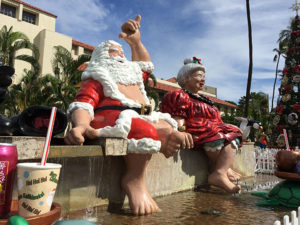‘Iolani Palace tells a story of Hawaii and her people. The Palace has been home to a royal family, executive building to a new republic, prison to an overthrown queen, capitol to a territory in transition, headquarters for martial law, treasure to Hawaii’s first governor, and now a National Historic Landmark and cultural icon.
A King Who Spared No Expense
King Kalākaua built ‘Iolani Palace in 1882 after being the first monarch to circumnavigate the globe. He spared no expense. The finest of furnishings were ordered from around the world, and the Palace rivaled the majesty of European castles. Outfitted with electricity, telephones, and indoor plumbing, the Palace surpassed the White House in innovation and technology. ‘Iolani Palace was home to King Kalākaua, his wife Queen Kapiʻolani, and his younger sister Queen Liliʻuokalani. King Kalākaua passed away in 1891, leaving his sister Queen Liliʻuokalani as his successor.
A Meticulous Process of Restoration
In 1893 Queen Liliʻuokalani and the Hawaiian monarchy were overthrown. The new government moved into the Palace and named it the Executive Building of the Republic of Hawaiʻi. At this time, Queen Liliʻuokalani was held prisoner in her own home. Also at this time, most of the furnishings were sold at auction. Today about half of the original furnishings have been meticulously restored to the Palace from private owners around the world.
When Hawaiʻi became a United States Territory at the turn of the century, ‘Iolani Palace served as the capitol. After Pearl Harbor was bombed by Japan in World War II, Hawaii entered a period of martial law in which the Palace became military headquarters. It was on the Palace grounds that the brave Hawaiian soldiers of Japanese descent, known as the 442nd Infantry, were sworn in before leaving Hawaii. The 442nd Infantry returned as heroes and leaders of Hawaiʻi.
Hawaii became a state in 1959, and John Burns was elected as the first Governor of Hawaiʻi. Governor Burns treasured ‘Iolani Palace, moving the state offices to a new location and starting the process of restoration which cost $7.5 million.
A Grand Museum
Today the ‘Iolani Palace is a grand museum open to the public, supported by volunteers and patrons. The Palace draws visitors and locals alike, inviting them to walk her 7,000 square feet of wooden floors and listen to her stories of yesteryear.







